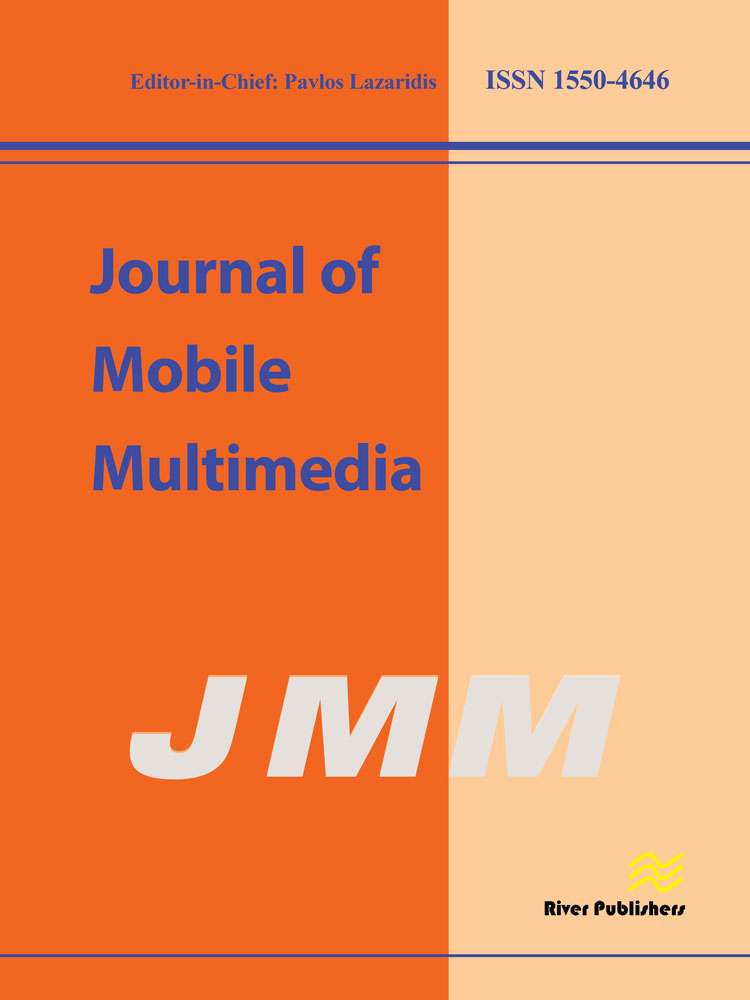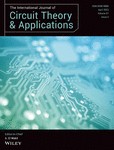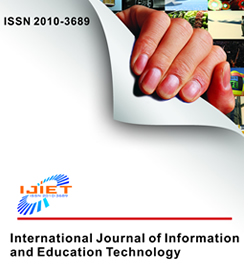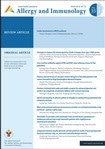
A Dimensional Consistency Aware Time Domain Analysis of the Generic Fractional Order Biquadratic System (2022)
Title : A Dimensional Consistency Aware Time Domain Analysis of the Generic Fractional Order Biquadratic System
Researcher : Banchuin, R. and Roungsan Chaisricharoen
Department : Faculty of Engineering & Graduated School of IT, Siam University, Bangkok, Thailand
Email : rawid.ban@siam.edu
Abstract : In this research, the time domain analysis of the fractional order biquadratic system with nonzero input and nonzero damping ratio has been performed. Unlike the previous works, the analysis has been generically done with dimensional consistency awareness without referring to any specific physical system where nonzero input and nonzero damping ratio have been allowed. The fractional differential equation of the system has been derived and analytically solved. The physical measurability of the dimensions of the fractional derivative terms which have been defined in Caputo sense, and response with significantly different dynamic from its dimensional consistency ignored counterpart have been obtained due to our dimensional consistency awareness. The resulting solution is applicable to the fractional biquadratic systems of any kind with any physical nature. Based on such solution and numerical simulations, the influence of the fractional order parameter to all major time domain parameters have been studied in detailed. The obtain results provide insight to the fractional order biquadratic system with dimensional consistency awareness in a generic point of view.
Keywords: fractional order biquadratic system, fractional differential equation, fractional time component parameter, dimensional consistency, time domain analysis
Link to article : Journal of Mobile Multimedia, 2022, Vol. 18 No.3, pp. 789–806. https://doi.org/10.13052/jmm1550-4646.18316
Journal : Journal of Mobile Multimedia / in Scopus
Citation : Banchuin, R., & Chaisricharoen R. (2022). A dimensional consistency aware time domain analysis of the generic fractional order biquadratic system. Journal of Mobile Multimedia, 18(3), 789–806. https://doi.org/10.13052/jmm1550-4646.18316
ฐานข้อมูลงานวิจัย มหาวิทยาลัยสยาม : https://e-research.siam.edu/kb/a-dimensional-consistency/

A novel generalized fractional-order memristor model with fully explicit memory description (2023)
Title : A novel generalized fractional-order memristor model with fully explicit memory description
Researcher : Banchuin, R.
Department : Faculty of Engineering, Siam University, Bangkok, Thailand
Email : rawid.ban@siam.edu
Abstract : In this work, a novel generalized mathematical model of fractional-order memristor with fully explicit memory description has been proposed. For obtaining such full explicit memory description, the Atangana-Baleanu fractional derivative in Liouville-Caputo sense, which employs a nonsingular kernel, has been adopted as the mathematical basis. The proposed model has been derived without regarding to any specific conventional memristor. A comparison with the singular kernel fractional derivative-based model has been made. The behavioral analysis of the fractional-order memristor based on the proposed model has been performed, where both DC and AC stimuli have been considered. In addition, its application to the practical fractional-order memristor-based circuit and its extension to the fractional-order memreactance have also been shown. Unlike the singular kernel fractional derivative-based model, a fully explicit memory description can be obtained by ours. Many other interesting results that are contradict to the previous singular kernel fractional derivative-based ones, e.g., the fractional-order memristor that can be locally active, have been demonstrated. The abovementioned extension can be conveniently performed. In summary, this is the first time that a nonsingular kernel fractional derivative has been applied to the fractional-order memristor modeling and the resulting model with a fully explicit memory description has been proposed. The proposed model is also highly generic, applicable to the practical circuit, and extendable to the fractional-order memreactance.
Link to article : International Journal of Circuit Theory and Applications, 2023, 51(4), pp. 1935–1957. https://doi.org/10.1002/cta.3410
Journal : International Journal of Circuit Theory and Applications / in Scopus
Bibliography : Banchuin, R. (2023). A novel generalized fractional-order memristor model with fully explicit memory description. International Journal of Circuit Theory and Applications, 51(4), 1935–1957. https://doi.org/10.1002/cta.3410

An Analysis of the Relationship of Social Application Usage on Academic Achievement of Nursing Students, Siam University (2016)
Title : An Analysis of the Relationship of Social Application Usage on Academic Achievement of Nursing Students, Siam University
Researcher : Assist. Prof. Dr. Jaratdao Reynolds, Assist. Prof. Dr. Orntipa Songsiri and Assist. Prof. Dr. Somrudee Chenkitiyanon
Department : Faculty of Nursing, Siam University, Bangkok, Thailand
E-mail : jaratdao@gmail.com
Abstract : As we enter the 21st century, social application/networking is being used by an increasing portion of world’s population, especially adolescents and young adult on a day- to-day regular activities. Students are increasingly uses these social application /networks for both academic and non-academic reasons. However, the use of this social application has led to debate over whether or not it has impacted on students’ life as well as their academic achievement. Some studies identified that social application/networking may be the tool used in helping to develop and enhance students’ skill required for 21st century (Tuan and tu,2013). Therefore, this study was aimed to explore the relationship of social application usage among nursing students on their academic performance (GPAs). It took into account on how students participated on socialn application, time invested by students on social application, frequency of usage and the purposes of usage. The study was a cross-sectional survey, using the developed questionnaire. The data was collected from 272 students in the second and fourth year of nursing program, Siam University during the academic year 2014-2015. The data were statistically analyzed by calculating percentage, mean, standard deviation, and Pearson correlation analysis. Results indicated that all of the nursing students were using at least one form of social application. For the use of social applications, it was obviously that, Facebook and Line were the most popular social application students used (100%), followed by google (89.7%) and instragram (57.57%).Results of frequency of usage indicated that 98.16 percent of students visited a social application/networking several times a day. In term of the purposed for using the social applications, they were varied. Even though students generally use social application for academic purposes; they also use it for nonacademic matters .For non academic purposed, the results shown that 94.12 percent of students reported used the social applications for communication with friends and family, and 72.80 percent reported they used for entertainment when they felt bored. Additional reasons reported included companionship (47.06%), and making friends (27.21%). For academic purposed, searching for information was the most reason students used (77.95%), followed by learning and sharing resources (66.91%), exchange ideas and discussion (48.16%) and professional networking (36.03%) respectively. The finding of this study found negative correlations between time spent on social application usage with students’ GPAs. In other words, GPAs decreased as the amount of time spent on social application usage. The purposes of usage was also shown to be significantly correlated with students’ GPAs. The students who use social application for academic purposes seem to earned better GPAs.Therefore, in the light of globalization and the information age, integration of these social application in students’ life is unavoidable,however findingmiddle ground has become a challenge.
Proceeding : การประชุมวิชาการระดับชาติ สมาคมสถาบันอุดมศึกษาเอกชนแห่งประเทศไทย ประจำปี 2559 วันที่ 26 พฤษภาคม 2559 มหาวิทยาลัยภาคตะวันออกเฉียงเหนือ APHEIT Conference 2016
Link to Proceeding: http://apheitconference.siam.edu/index.php/en/proceedings-2012-2016
Bibliography : Jaratdao Reynolds, Orntipa Songsiri & Somrudee Chenkitiyanon. (2016). An analysis of the relationship of social application usage on academic achievement of nursing students, Siam University. In Proceedings of Conference 2016 (pp. 170-171). Khon Kaen: North Eastern University.

Analytical model of inverse memelement with fractional order kinetic (2022)
Title : Analytical model of inverse memelement with fractional order kinetic
Researcher : Banchuin, R.
Department : Faculty of Engineering & Graduated School of IT, Siam University, Bangkok, Thailand
Email : rawid.ban@siam.edu
Abstract : In this work, the analytical model of inverse memelement with fractional order kinetic has been proposed. The classical yet noncontroversial Caputo fractional derivative has been adopted for modeling such fractional order kinetic due to its simplicity yet accuracy. Based on the proposed model, the analysis of fractional order kinetic inverse memristor has been thoroughly performed where both nonperiodic and periodic excitations have been considered. Analytical formulations of the related parameters, for example, the rate of changes of inverse memristance, area of inverse memristance loop, and area of pinched hysteresis loop, and so on, have been performed. The extension of the proposed model to the fractional inverse memelement has been performed where the fractional inverse memristor has been analyzed. We have found that the inverse memristor still behaves in an opposite manner to the memristor even with the fractional order kinetic. All obtained results have been found to be intuitively applicable to any inverse memelement. The equivalent circuit models of both fractional inverse memristor and fractional inverse memelement have also been presented. This work provides a comprehensive understanding on both inverse memelement with fractional order kinetic and fractional inverse memelement. The realization of the emulator of such inverse memelement with fractional order kinetic and the fractional inverse memelement emulator has been found to be interesting opened research questions.
Link to article : International Journal of Circuit Theory and Applications, 2022, 50(7), pp. 2342–2377. https://doi.org/10.1002/cta.3264
Journal : International Journal of Circuit Theory and Applications / in Scopus
Bibliography : Banchuin, R. (2022). Analytical model of inverse memelement with fractional order kinetic. International Journal of Circuit Theory and applications, 50(7), 2342-2377. https://doi.org/10.1002/cta.3264
ฐานข้อมูลงานวิจัย มหาวิทยาลัยสยาม : https://e-research.siam.edu/kb/analytical-model-of-inverse/

Applying a mixed method of quantitative and qualitative design in explaining the travel motivation of film tourists in visiting a film-shooting destination (2015)
Title : Applying a mixed method of quantitative and qualitative design in explaining the travel motivation of film tourists in visiting a film-shooting destination
Researcher : Bongkosh Rittichainuwat and Suphaporn Rattanaphinanchai
Department : Service Industry Management, Siam University, Bangkok, Thailand
E-mail : Bongkosh N. Rittichainuwat ngamson@gmail.com
Abstract : This study aims to: 1) describe the travel motivations of the types of film tourists proposed by Macionis (2004), specifically, serendipitous tourists, specific film tourists, and general film tourists, in visiting a film-induced tourist destination; and 2) empirically test the assumption that film tourism is incidental and neither the main nor the sole motivation of most tourists traveling to a film destination. A mixed method of quantitative and qualitative (a series of self-complete questionnaire surveys over a period of eleven months and a longitudinal study of interviews and participant observations over a period of four years) was used in the study. Out of 1852 samples, the numbers of specific film tourists (10.5%) and general film tourists (19.5%) are less than serendipitous tourists (70%). Though both business and leisure tourists can be specific film tourists, their number is very small. Furthermore, serendipitous tourists can be distributed into almost equal numbers, namely, “incidental serendipitous tourists,” “disinterested serendipitous tourists,” and “sightseeing serendipitous tourists.” While successful films create destination awareness among all types of film tourists, an individual’s favorite film, rather than a successful film, motivated most specific film tourists to take a pilgrimage film trip. This study also highlights the value of the mixed method, of a quantitative and qualitative approach, in explaining film tourism, in regards to unusual behavior of outliers. Whereas the quantitative design increases the generalization of the findings, the qualitative method provides better understanding of contradictory findings without having to eliminate outliers from analysis.
Publication : Tourism Management Vol.46 February 2015
Link to Publication: https://www.sciencedirect.com/journal/tourism-management/vol/46/suppl/C
Bibliography : Rittichainuwat, B. & Rattanaphinanchai, S. (2015). Applying a mixed method of quantitative and qualitative design in explaining the travel motivation of film tourists in visiting a film-shooting destination. Tourism Management, 46, 136-147. 10.1016/j.tourman.2014.06.005
Author details in Scopus: Rittichainuwat, Bongkosh Ngamsom
Scopus Citations: https://www.scopus.com/sources.uri?DGCID=Scopus_blog_post_check2015
Google Scholar Citations: https://scholar.google.com/citations?user=ifUlKJoAAAAJ&hl=en

Applying Correlation Analysis and Tam for Determining Relationship Between Two Variables
Title : Applying Correlation Analysis and Tam for Determining Relationship Between Two Variables
Researcher : Pitchayakorn Lake พิชญากร เลค
Department : Faculty of Information Technology, Siam University, Bangkok, Thailand
E-mail : pitchayakorn@siam.edu
Abstract : Future scenarios of political, economics and education sectors will depend on the contributions of students. The twenty-first century educator is a visionary. Teachers see the potential in the emerging tools and technology innovations in order to manipulate them to serve student’s needs. The universities across the world have incorporated in learning systems. The success of educator requires an extensive understanding of technology innovations. Educational innovations will be effective if they research on educational technology i.e. technology-learning process and technology in using hardware and software. The research use TAM in order to stimulate to learn more.
The objective of this research is to study the relationship between two variables of Information Technology and Computer for Studies and Works by using correlation analysis. Data collection were obtained from 284 respondents with the mean of 406.6 on MS. Word and SD. is 291.9. The mean on MS. Excel is 291.9 and SD. is 313.8. The students who got MS. Word scores better on average than MS. Excel scores. Out of the 284 respondents 128 (45.1%) were male and 156 (54.9%) were female. The result shows that correlations coefficient is 0.749. The coefficient is calculated by taking the covariance of the two variable. The students who got MS. Word and MS. Excel scores, were linear correlated statistically significant at 0.05 (F=360.63, p = 0.000). The researcher used variable of MS. Word scores as a predictor, which can predict 56.1% of MS. Excel scores. The regression equation is MS. Word = 131.718 + 0.942 (MS. Excel).
Keywords : Information Technology, Computer for Studies and Works, Correlation Analysis
Proceeding : การประชุมวิชาการระดับชาติ สมาคมสถาบันอุดมศึกษาเอกชนแห่งประเทศไทย ประจำปี 2559 วันที่ 26 พฤษภาคม 2559 มหาวิทยาลัยภาคตะวันออกเฉียงเหนือ APHEIT Conference 2016
Link to Proceeding: http://apheitconference.siam.edu/index.php/en/proceedings-2012-2016
Bibliography : Pitchayakorn Lake. (2016). Applying correlation analysis and tam for determining relationship between two variables. In Proceedings of APHEIT Conference 2016 (pp. 139). Khon Kaen: North Eastern University.

Applying process mining to analyze the behavior of learners in online courses (2021)
Title : Applying process mining to analyze the behavior of learners in online courses
Researcher : Arpasat, P., Premchaiswadi, N., Porouhan, P., Premchaiswadi, W.
Department : Doctor of Philosophy Program in Information Technologyy, Graduate School, Siam University
E-mail :
ฐานข้อมูลงานวิจัย มหาวิทยาลัยสยาม : https://e-research.siam.edu/kb/applying-process-mining-to-analyze/
Link to article: International Journal of Information and Education Technology, 2021, 11(10), pp. 436–443. https://doi.org/10.18178/ijiet.2021.11.10.1547
Publication: International Journal of Information and Education Technology / in Scopus
Bibliography : Arpasat, P., Premchaiswadi, N., Porouhan, P., Premchaiswadi, W. (2021). Applying process mining to analyze the behavior of learners in online courses. International Journal of Information and Education Technology, 11(10), 436–443. https://doi.org/10.18178/ijiet.2021.11.10.1547

Applying the perceived probability of risk and bias toward optimism: Implications for travel decisions in the face of natural disasters (2018)
[dflip id="7244" type="thumb"][/dflip]Researcher : Bongkosh Rittichainuwat, Robert Nelson, Fitri Rahmafitria
Department : Service Industry Management, Siam University, Bangkok, Thailand
E-mail : Bongkosh N. Rittichainuwat ngamson@gmail.com
Abstract : Unperceived risk leads to lack of preparedness. This study aims to examine tourists’ risk perception and travel decisions using as variables demographics, knowledge about safety, and country of residence. Samples were gathered in Thailand, Japan, Australia, and Indonesia. A total of 916 completed questionnaires of five replicated surveys were used in this study. More than halve of the respondents whose country had been affected by the Indian Ocean tsunami in 2004 did not perceive tsunami risk when 10 years has passed. Frequency of tsunami occurrence was positively related to perceived tsunami probability. This study confirms the theory of probability that low frequency of a natural disaster results in unperceived risks. Even if their destination had a history of tsunamis, tourists’ perceived risk of another such occurrence happening during their visit is low (that is, the risk of natural disaster is low). While the literature in earth science found that residents of risky areas tend to be optimistic about the place where they live, our study extends the theory of optimistic bias to indicate that the same optimistic bias is applicable to tourists. Asia and Southeast Asia were perceived as tsunami-prone but tourists still travelled there. Our study found that tourist risk perception was related to frequency of tsunami occurrence and was destination specific. The perception of probability of a natural disaster is also related to proximity and past experience. Replications are necessary to validate results before generalization.
Publication : Tourism Management Vol.66 June 2018
Link to Publication: https://www.sciencedirect.com/journal/tourism-management/vol/66/suppl/C
Bibliography : Rittichainuwat, B., Nelson, R., & Rahmafitria, F. (2018). Applying the perceived probability of risk and bias toward optimism: Implications for travel decisions in the face of natural disasters. Tourism Management, 66, 221-232. DOI: 10.1016/j.tourman.2017.09.013.
Author details in Scopus: Rittichainuwat, Bongkosh Ngamsom
Scopus Citations: https://www.scopus.com/sources.uri?DGCID=Scopus_blog_post_check2015
Google Scholar Citations: https://scholar.google.com/citations?user=ifUlKJoAAAAJ&hl=en

Association of HLA genotypes with Beta-lactam antibiotic hypersensitivity in children (2021)
Title : Association of HLA genotypes with Beta-lactam antibiotic hypersensitivity in children
Researcher : Clin.Prof.Suwat Benjaponpitak
Department : Faculty of Medicine, Siam University, Bangkok, Thailand
E-mail : med@siam.edu
Abstract : Background: Beta-lactam (BL) antibiotics hypersensitivity is common in children. Clinical manifestation of BL hypersensitivity varies from mild to severe cutaneous adverse drug reactions (SCARs).
Objective: To determine the association of HLA genotype and BL hypersensitivity and the prevalence of true drug allergy in patients with history of BL hypersensitivity.
Methods: A case-control study was performed in 117 children with aged 1-18 years. Children with history of non-SCARs BL hypersensitivity were evaluated for true drug hypersensitivity including skin test and drug provocation test. Tolerant control patients were children who could tolerate BL for at least 7 days without hypersensitivity reaction. HLA genotype (HLA-A, HLA-B, HLA-C and HLA-DRB1) were performed in 24 cases and 93 tolerant controls using PCR-SSO (polymerase chain reaction – sequence specific oligonucleotide probes).
Results: There were association of HLA-C*04:06 (OR = 13.14, 95%CI: 1.3-137.71; p = 0.027), and HLA-C*08:01 (OR = 4.83, 95%CI: 1.93-16.70; p = 0.016) with BL hypersensitivity. HLA-B*48:01 was strongly associated with immediate reaction from BL hypersensitivity (OR = 37.4, 95%CI: 1.69-824.59; p = 0.016) while HLA-C*04:06, HLA-C*08:01 and HLA-DRB1*04:06 were associated with delayed reaction (p < 0.05). Among 71 cases who were newly evaluated for BL hypersensitivity, only 7 cases (9.8%) had true BL hypersensitivity.
Conclusions: Less than 10% of children with suspected of BL hypersensitivity have true hypersensitivity. There might be a role of HLA-B, HLA-C and HLA-DRB1 genotype in predicting BL hypersensitivity in Thai children.
Link to Academic article: Asian Pacific Journal of Allergy and Immunology, 2021, 39(3), pp. 197–205. DOI: 10.12932/AP-271118-0449
Journal : Asian Pacific journal of allergy and immunology / in Scopus
Citation : Singvijarn, P., Manuyakorn, W., Mahasirimongkol, S., Wattanapokayakit, S., Inunchot, W., Wichukchinda, N., Suvichapanich, S., Kamchaisatian, W., & Benjaponpitak, S. (2021). Association of HLA genotypes with Beta-lactam antibiotic hypersensitivity in children. Asian Pac J Allergy Immunol. 39(3), 197–205. doi: 10.12932/AP-271118-0449. Epub ahead of print. PMID: 31012593.

Association of HLA genotypes with phenytoin induced severe cutaneous adverse drug reactions in Thai children (2020)
Title : Association of HLA genotypes with phenytoin induced severe cutaneous adverse drug reactions in Thai children
Researcher : Clin.Prof.Suwat Benjaponpitak
Department : Faculty of Medicine, Siam University, Bangkok, Thailand
E-mail : med@siam.edu
Abstract : Purpose: Phenytoin (PHT) is a common causative drug for severe cutaneous adverse drug reactions (SCARs) in children. SCARs, including drug reaction with eosinophilia and systemic symptoms (DRESS), Stevens-Johnson syndrome (SJS) and toxic epidermal necrolysis (TEN), are associated with a variation in HLA genotypes. Blood screening for specific HLA allele before PHT prescription would help in the reduction of the incidence of PHT induced SCARs. This study was to investigate the association between variations of HLA genotypes and PHT induced SCARs in Thai children.
Methods: Cases were Thai children aged between 0-18 years diagnosed with SCARs from PHT. Control groups were Thai children of corresponding age who had taken PHT for a least 12 weeks without any hypersensitivity reaction and healthy population controls. Blood samples from both groups were collected for HLA genotyping using a reverse-sequence specific oligonucleotide (SSO) probes method. Carrier rates of HLA alleles were compared between 22 cases (17 DRESS and 5 SJS-TEN), 60 tolerant controls and 649 population controls.
Results: Two HLA alleles includingHLA-B*51:01 and HLA-C*14:02 were significantly associated with PHT induced DRESS (OR 5.83; 95 % CI 1.36-25.00, p = 0.022 and OR 5.85; 95 % CI 1.16-29.35, p = 0.039). HLA-B*38:02 was significantly associated with PHT induced SJS-TEN (OR12.67; 95 % CI 1.50-106.89, p = 0.044). Haplotype analysis demonstrated the association of HLA haplotype A*11:01-B*51:01-C*14:02 and PHT induced DRESS compared to tolerant controls and the healthy population control group (OR 8.92; 95 % CI 1.47-54.02, p = 0.019, and OR 10.2; 95 % CI 3.04-34.21, p = 0.002). HLA haplotype B*38:02-C*07:01 in PHT induced SJS-TEN was significantly higher than those in tolerant controls and the healthy population control group (40 % vs 3.3 % vs 0.3 %; OR 19.33; 95 % CI 1.98-188.59, p = 0.027 and OR 215.67; 95 % CI 22.40-2076.04, p = 0.0003. HLA-B*15:02 was not associated with PHT induced SCARs.
Significance: An association betweenHLA-B*51:01 and HLA-C*14:02 and PHT induced DRESS and HLA-B*38:02 and PHT induced SJS-TEN has been demonstrated in Thai children.
Keywords: Drug reaction; HLA-B*38:02; HLA-B*51:01; HLA-C*14:02; Phenytoin.
Link to article : Epilepsy Research, 2020, 162, 106321. DOI: 10.1016/j.eplepsyres.2020.106321
Journal : Epilepsy Research Volume 162, May 2020,
Bibliography : Manuyakorn, W., Likkasittipan, P., Wattanapokayakit, S., Suvichapanich, S., Inunchot, W., Wichukchinda, N., Khongkhatithuml, C., Thampratankul, L., Kamchaisatian, W., Benjaponpitak, S., & Mahasirimongkol, S. (2020, May). Association of HLA genotypes with phenytoin induced severe cutaneous adverse drug reactions in Thai children. Epilepsy Res, 162, 106321. doi: 10.1016/j.eplepsyres.2020.106321. Epub 2020 Mar 13. PMID: 32272329.